Ask A Gear Guru: What Is A 1X Drivetrain? Should Triathletes Try It?
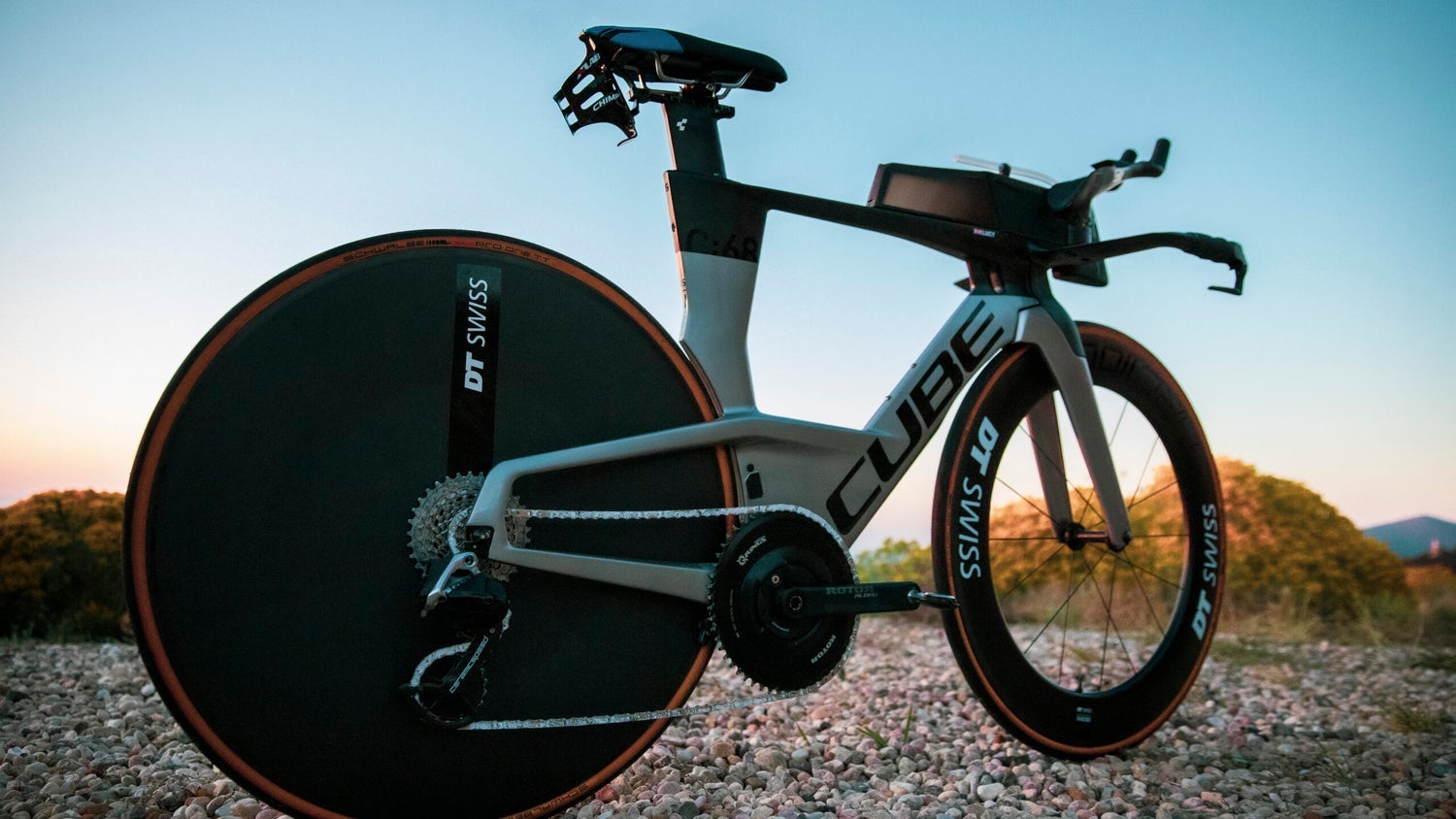
(Photo: Holly Charles)
Many tech savvy triathletes have been experimenting with 1X drivetrains (pronounced “one by”) as a way to simplify their shifting and improve aerodynamics, but should you?
Simply put, “1X” refers to the number of front chainrings on a bike. A single chainring is used—eliminating a ring on the inside, the front derailleur, and the front shifter. SRAM pioneered the use of single-chainring drivetrains, first on mountain bikes, then cyclocross rigs, and more recently for triathlon steeds.
Most recently, we saw 1X setups at 70.3 World Championships on pros’ bikes like world champion Lucy Charles-Barclay and Emma Pallant-Browne, among others. Elsewhere, stars like 2011 ITU long-course world champion (and self-described gear-nerd) Jordan Rapp, two-time Olympic gold medalist Alistair Brownlee, and even UCI cycling world time trial champion Tony Martin, have used 1X systems in search of performance gains.
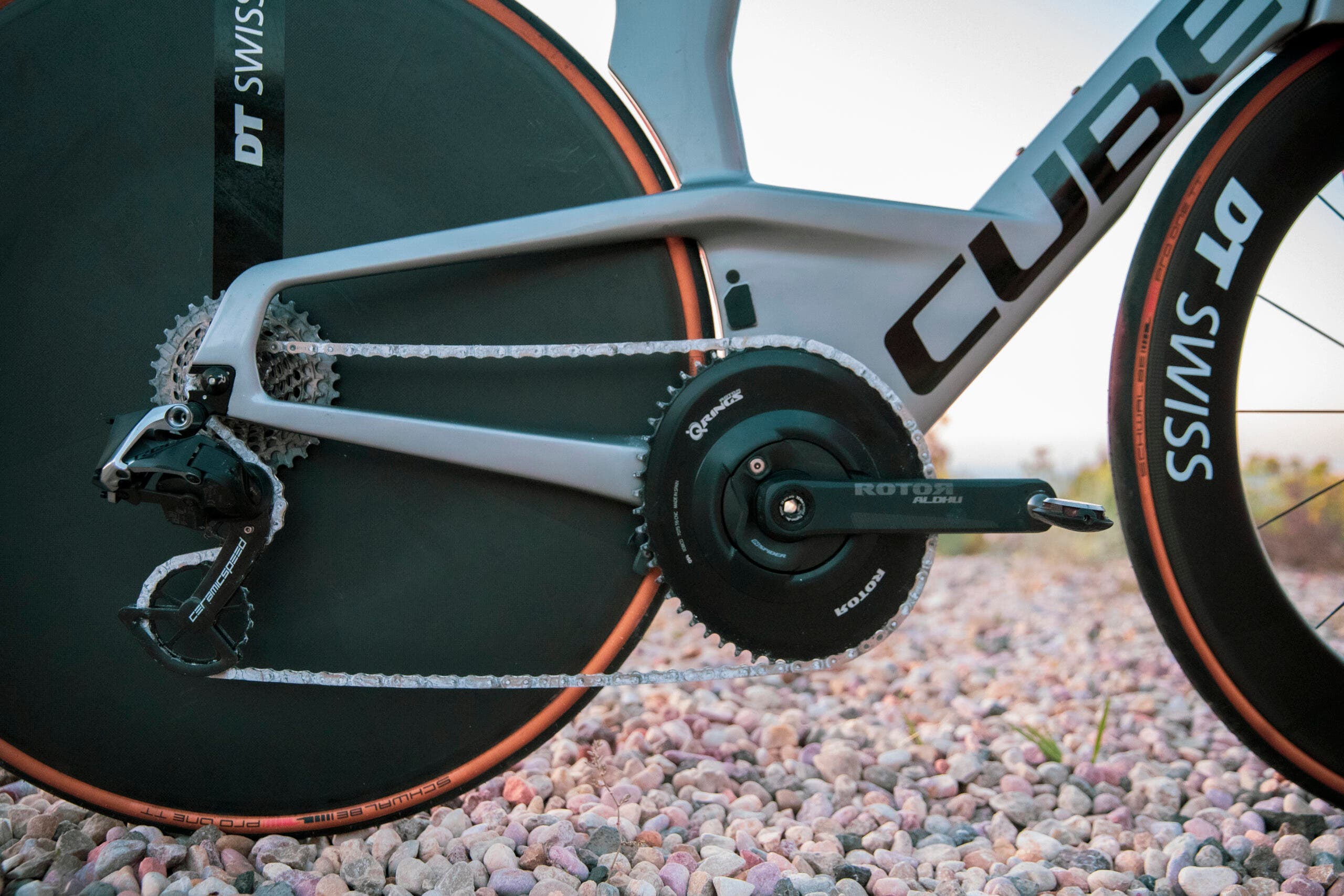
Benefits
Eliminating half your drivetrain drops weight and means that air flow over your bike is slicker. According to Xavier Disley of AeroCoach, expect to see savings of three watts—with more up for grabs, depending on the frame, front derailleur, and crank in question.
Another upside to 1X is that you only have to remember how to shift to a harder or easier gear, especially when cross-eyed and at your limit. 1X shifting is sequential, unlike the compound shifts (both front and rear) needed on 2X systems—though many electronic systems now have a sequential mode that eliminates this. A 1X also reduces the chances of a dropped chain, eases packing and unpacking your bike, and creates less maintenance throughout the season.
What it Takes
For the most secure chain retention, a 1X drivetrain requires a wide/narrow chainring, where the teeth alternate in width to help retain the chain. It also includes a rear derailleur with a clutch that increases tension on the chain so the longer chain (without a front derailleur to contain it) won’t skip off the front derailleur on rougher roads.
The simplest way to go 1X is to buy one of SRAM’s well-suited 1X drivetrains like the SRAM Rival or Force 1×11 (mechanical), or Rival, Force, or RED eTAP AXS 1×12 (electronic). Mechanical Shimano devotees should check out the GRX RX810 1×11 with Dura-Ace bar-end shifters. The other Shimano option is to pony up for Di2 and use a Di2 mountain bike rear derailleur, a clutched Di2 road rear derailleur like the Ultegra RX805, or the GRX Di2 system with electronic shifting levers and buttons. Either way, the Shimano option is not simple, and you’ll need non-Shimano 1X chainrings no matter what to hit the gear ratios you’ll need. Rotor also offers a very cool hydraulic-actuated, disc-brake 1×12 or 1×13 drivetrain/hub system made just for tri/tt setups. More on what drivetrains are out there, far below.
Wide/narrow chainrings from SRAM, Rotor, Wolftooth, Absolute Black, and AeroCoach are widely available, with both round and ovalized shapes in sizes that make sense for the road (46T+). Wide-range cassettes from the common 11-28T all the way through Rotor’s monstrous 10-52T complement a single ring well, as you’ll need to make up for the missing inside front chainring somewhere.
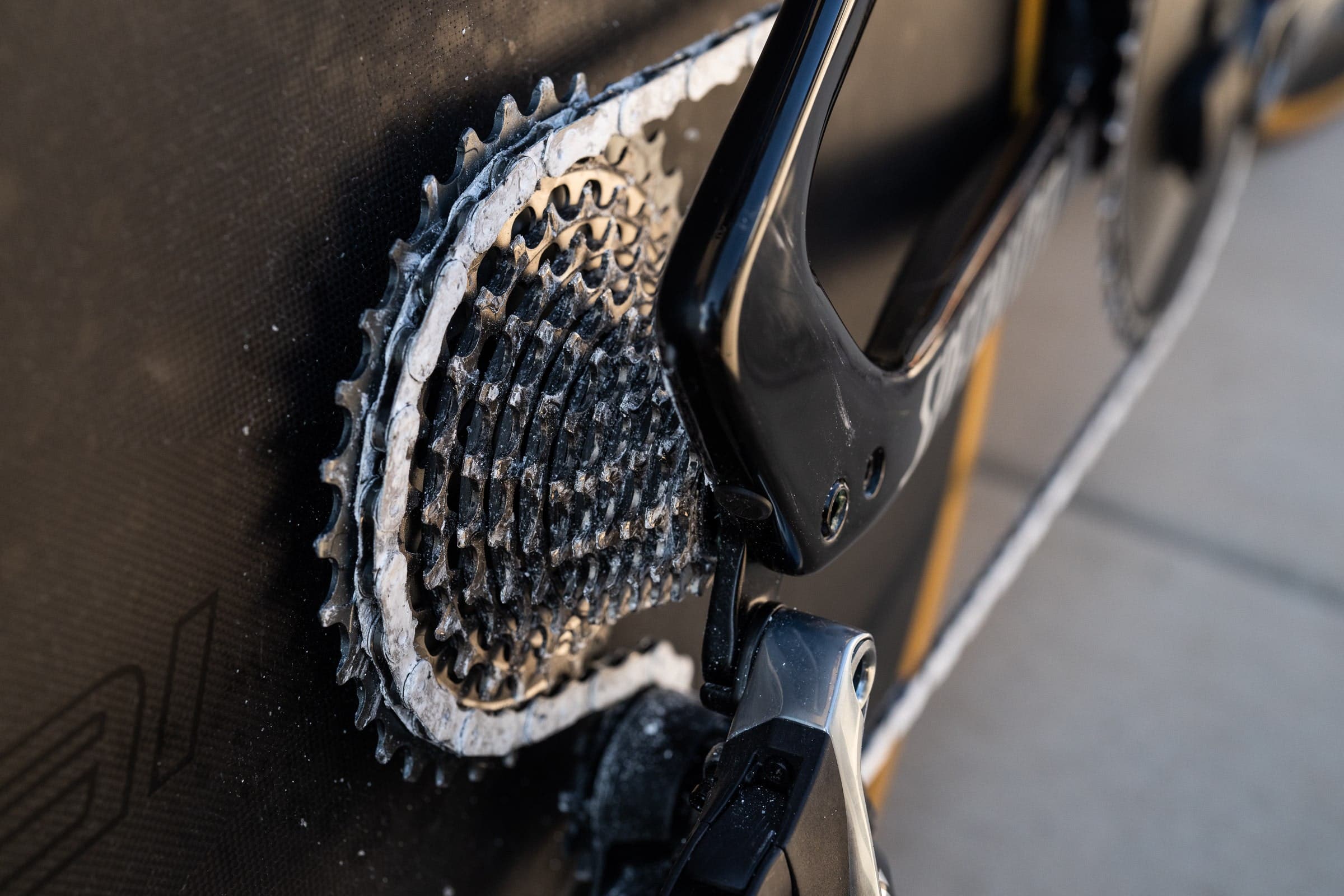
Drawbacks
The downside of 1X is the additional homework needed to figure out your best gear range. Ideally, you pick a chainring that keeps you in the tighter section of the cassette, reserving the larger cogs as a bailout. If you live in a hilly area or travel to areas with diverse terrain, you may need to change chainrings or cassettes frequently. Similarly your gear ratios may change as you age or race in different areas at different distances.
To 1X or Not?
Ultimately, that’s up to you. If you live and race in flatter areas, then 1X is an easier choice. If you don’t mind frequent chainring and cassette swaps, 1X drivetrains can offer a range for nearly any tri. Just be sure to research your gearing needs before taking the plunge. “Everyone I know who shifts to 1X does it at first for weight or aero,” said Rapp. “But they stick with it because it’s simpler, and that just makes riding a bike more fun.”
Read below for a few quick 1X drivetrain options:
SRAM Rival eTap AXS 1x12spd Drivetrain
- eTap Clics (bar-end shifters) – $122
- eTap Blips (base bar shifters) – $112
- Rival eTap AXS 12spd Rear Derailleur – $255
- Rival 1 Wide 12spd Crankset (40T, 46T) – $130
- Rival Flattop Chain – $30
- Rival XG-1250 Cassette (10-30T, 10-36T) – $125
- eTap AXS Blipbox – $393
Total 1X Rival eTap AXS drivetrain (without brakes or brake levers) – ~$1,167
sram.com
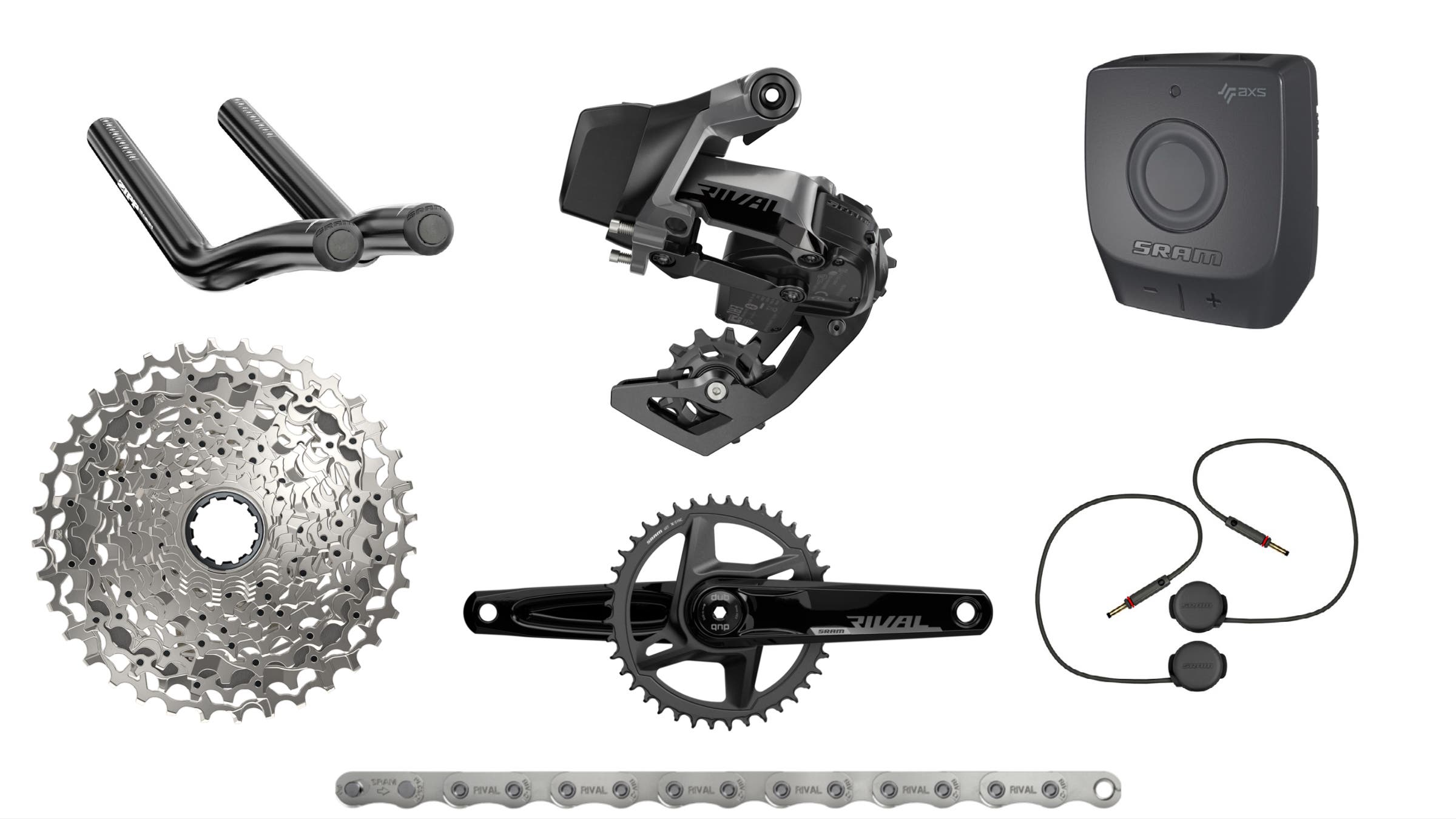
If you’re looking to get into an electronic 1X system, and you’re looking to not spend a ton, SRAM’s new Rival eTap 1X system is a great choice. The setup above includes everything you’d need, except brake levers (SRAM brake levers run from $70-265 depending on braking type) and of course the braking system itself. The beauty of the setup (aside from the price) is that it’s all wireless, controlled via the Blipbox and the shifters (the Blips) can be placed anywhere on the basebars—not limiting you to the brake levers. Upgrading to the lighter-weight Force system will also give more gearing options and cost an additional ~$300.
Rotor 1×12 Triathlon/TT Hydraulic Groupset
$1,500; includes shifter, derailleur, hydraulic hoses, cassette (11-36T-52T,) chain, crankset (38-54T); rotoramerica.com
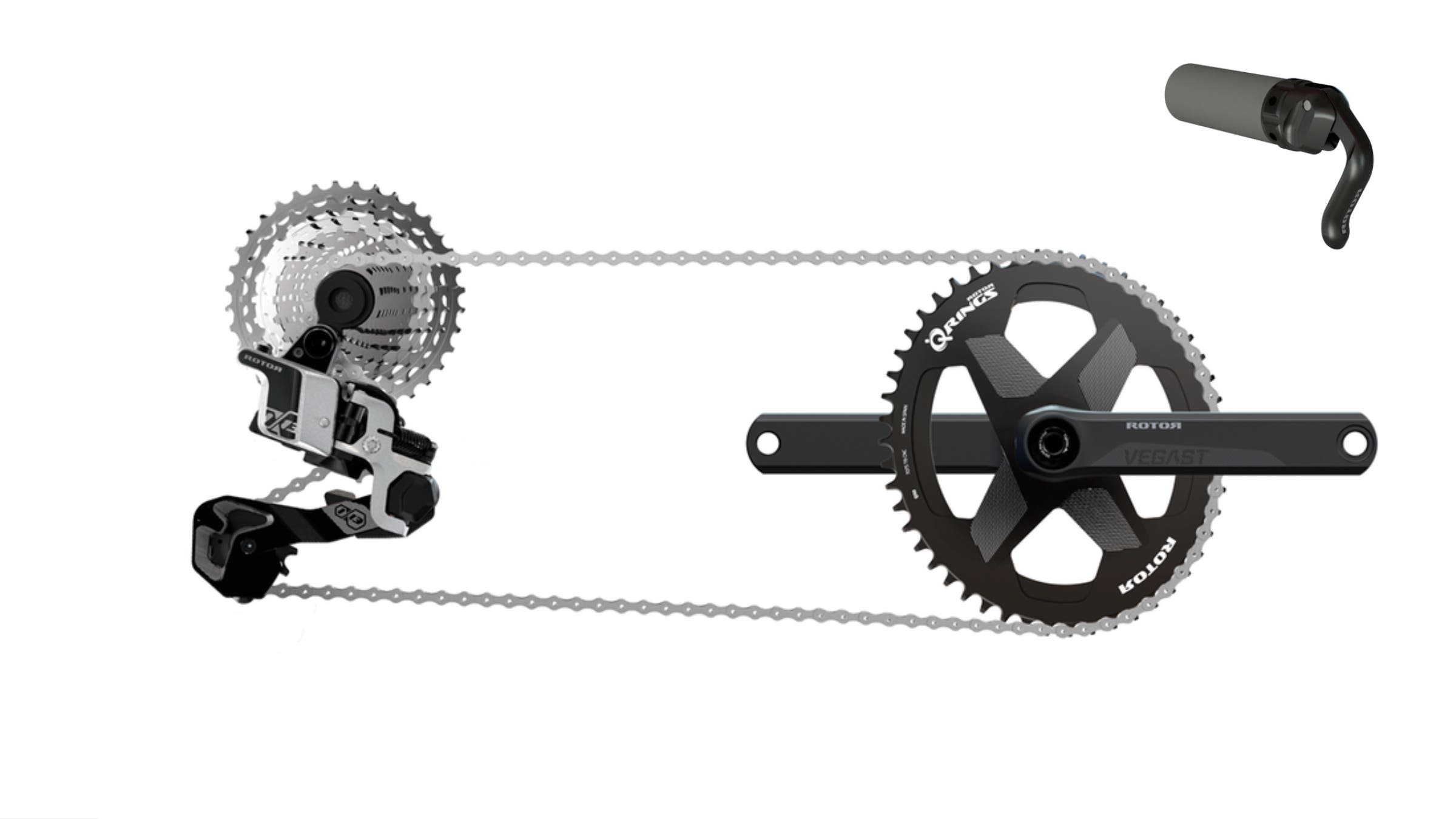
Though not nearly as well known as SRAM or Shimano, Rotor has made a name for itself in the crankset world with its novel, outside-the-box ovalized Q-Rings system. Rotor continues that trend by having some of the more widely-used 1X chainrings that run a huge range of sizes (Lucy Charles-Barclay’s monstrous 54T chainring, for example). They’ve also developed a hydraulic-actuated 1X drivetrain system that uses hydraulic lines to shift from a front lever, back to the rear derailleur. Rotor also has a $2,375 1×13-speed system that also includes the necessary 13-speed hub (disc brake only). While this is an elegant system, adding a hydraulic line to your drivetrain system may not be for everybody.